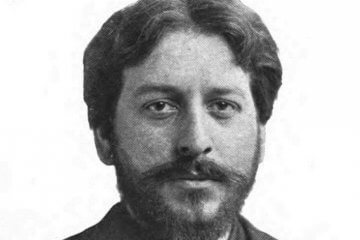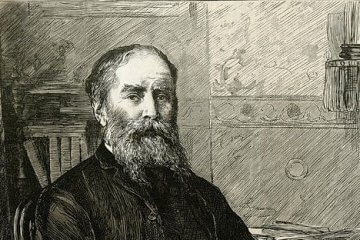In his excellent article, “Why a Classical Education Is Almost Impossible Today,” Shawn Barnett points out that much of the education that flies the banner of “classical education” is not classical in the, shall we say, “classical sense.” Barnett criticizes what he calls “a gross oversimplification” of the story of education, pointing out that there were other forms of education that were not classical before 1900. He cites this date from the timeline of the Association of Classical Christian Schools, which he says “depicts the history of education in three eras: Everything before 1900 is labeled ‘classical education,’ wedged in the middle is progressive education from about 1900 until the 1980s, and then ‘school regained.’” Barnett disputes this:
Schools before the turn of the last century were anything but a monolith operating on a singular model.
On the European continent, school reform had been a matter of perennial interest. In Germany, for example, school reformers in Halle in the 1700s developed schools that replaced instruction in Latin with more practical subjects such as mechanics. There was, indeed, an ideal of classical education in the 1800s, but that had little to do with what was taught in most Midwestern one-room schoolhouses.
This is true, of course, and undoubtedly there is some confusion among many modern classical educators as to the differences between the McGuffey Reader approach of Midwestern one-room schoolhouses and what went on at Eton. At the same time, the average teacher in a Midwestern one-room schoolhouse would have had some conception of the difference in what he taught and what a teacher from a good school in Boston might teach. And he would have felt obliged to stand aside if a master Latin teacher came to town.
The reason the Little School on the Prairie did not offer Latin was largely because it didn’t have the resources to, not because it didn’t want to. Not until the late nineteenth century did schooling even become universal, and schools—particularly those that were in frontier territories—should be excused for offering only a rudimentary education in reading, writing, and (as my dad used to say) “figgerin’.”
Although Barnett’s point about education before 1900 is technically true, it is also a little deceptive. To say that school reformers in earlier centuries were trying to direct education toward ends other than classical ones is not evidence that most schools were not classical in their purposes. School reformers, almost by definition, are a minority. And, as Joseph Sobran once pointed out, reform implies form. What was the “form” the reformers were working to change? If it wasn’t a classical form, then I don’t know what it was. That there were people who called and considered themselves “reformers” is testimony of a standard, widely accepted understanding of education, not the opposite. And if the Little School on the Prairie was not classical, it was because it was more focused on getting its students a rudimentary training in basic skills. Insofar as students did read literature, it was largely classical in orientation.
That people at the turn of the century understood there was some form of education broadly classical and some upstart form broadly modern is evidenced by how people talked at the time. In Europe, remarks such as those found in Leo Tolstoy’s Anna Karenina, in which there is a dinner table debate about the relative merits of “classical” vs. “modern” education, show that people assumed classical education consisted of something like the liberal arts and the great books and modern education consisted of something like vocational training. In America, books such as R. W. Livingstone’s A Defence of Classical Education, as well as speeches given at the great meeting of classical educators at Princeton in 1917 (now published as The Value of Classical Education), illustrated these same assumptions about classical education. And anyone able to read Latin (or who was able to deploy the appropriate Latin expression for the right occasion) was counted to be “classically educated.”
Despite the qualifications we might want to take note of, classical education was, generally speaking, the educational ideal before 1900. It’s what most people thought education was. So the issue is one of bringing our own definition of education into alignment with this ideal.
Despite the qualifications we might want to take note of, classical education was, generally speaking, the educational ideal before 1900. It’s what most people thought education was.
Barnett correctly points to the influence of Dorothy Sayers on the classical education movement. Sayers’ essay “The Lost Tools of Learning” was the catalyst for the revival of interest in classical education (it literally would not exist had she not written the essay), even though her influence has somewhat distorted the actual practice of modern classical education:
The thinker with perhaps the most influence on the classical school movement, Dorothy Sayers, did explicitly advance a return to an older “educational theory.” The educational theory Sayers advanced was supposedly the medieval trivium (grammar, logic, and rhetoric). Sayers was not so much reacting against Dewey’s theories as she was against the increasing specialization of curriculum, a trend that predates Dewey.
At first glance, it seems Sayers wants to turn back the clock even further than the 1800s, but closer inspection reveals that what Sayers is suggesting is no restoration of older methods or theories at all. Her entire program is based on turning the trivium into a framework for child development. What Sayers proposes, with the exception of learning Latin, has very little to do with education as it actually existed during the Middle Ages and more to do with her own rather unprofessional musings on child psychology.
This is right on. In fact, I would go further and say that Sayers—who was instrumentalist in her influence—actually believed the same as Dewey that education is not about what you should know and understand, but, as her basic thesis states, is about teaching children how to think, not what to think, a formulation that has become a fixture in progressivist sloganeering. Sayers employs the same false dichotomy as Dewey—a dichotomy between knowledge and skills.
In Sayers’ “three stages” of learning, she reduces education to a mere methodology, although she never actually identifies this with classical education in her essay (something most of her modern readers don’t seem to notice). Only later did early advocates of classical education make this false identification.
But her essay—and her conception of the trivium—has unwittingly led to the revival of the authentic trivium along with the rest of classical education, because Sayers’ “stages of learning” were mistakenly identified with classical education. The revival occurred due to a movement that has grown and continues to grow beyond Sayers’ boundaries. This is what a renewal is: a relearning and a reapplication. Modern classical educators, I think, are slowly learning what Barnett rightly points out in his article—that classical education is much more than simply tacking Latin onto a curriculum and reading The Wind in the Willows.
Barnett notes what the term “classical education” has traditionally referred to:
The term “classical education” referred more specifically to the sort of education one could receive at a German gymnasium, a French lycée, or a posh British public school such as Eton or Rugby. In the 19th century, only a tiny proportion of the American population had ever been “classically educated.”
This is also true, but also explainable in terms of historical circumstances. The first of these circumstances was that classical education of the kind that had for the most part been a feature of the education of a political or cultural aristocracy, is, by definition, a small portion of the population. The second circumstance was that education on a mass scale was only conceived and attempted in the nineteenth century, and so the problem of how a mass population should be educated—and whether that education should be classical or something else—wasn’t even what Williams James would have called a “live option” until that time.
That the actual practice of classical education has always been limited does not prove that it should not be a paradigm for education now; it merely proves that education itself was limited. Classical education was limited in its practice because formal education was limited in its availability.
Classical education was limited in its practice because formal education was limited in its availability.
In fact, the problem of how and whether you should conduct a classical education with a mass population is the very question with which Mortimer Adler (who Barnett mentions in his article) contended. Adler’s solution was a proposal (The Paideia Program) to teach the great books in English, without recourse to the original Latin and Greek.
But can you really have a classical education if you do not learn Greek and Latin? Again, I am with Barnett on this one: In order to be truly classically educated, you need to learn these languages. But I differ with him on the extent to which Latin was taught in American schools. In fact, Latin in particular was widely taught before the 1920s in schools, a fact testified to by the national debate that took place in the second decade of the twentieth century over the issue of whether it should be.
We are in a position today to have to ask the question: “How can classical education be defined in a way that both takes into account how it was historically practiced and outlines a way that it can profitably be practiced today?” Note that this does not require us to find the exact right way to do classical education. British education around 1900 was much different from the education in medieval university schools, and this was much different from what might have been going on in Quintilian’s classroom in first-century Rome, and that was much different from the daily routine in Plato’s Academy.
But we must ask: Do not all of these educational situations share a common purpose that is fundamentally different from that of modern public schools (and many modern private ones for that matter)? And is there not a label which could properly be applied to these earlier forms of education that could not be applied to the modern ones? And wouldn’t this label—admittedly loose-fitting in many situations—be a correct and useful way to categorize schools?
The question of how much Latin is necessary for a truly classical education is certainly a relevant one to ask when defining classical education. But it is not the first question to ask. The first question to ask should follow Aristotle’s suggestion that the most essential form of definition is definition according to final cause—definition in terms of a thing’s purpose.
What is the purpose of classical education? This, it seems to me, is classical education’s most basic definition, and what marks it off most strongly from the progressive and pragmatic purposes of modern education. Whereas modern progressive education is about using schools to change the culture in a progressive direction, and pragmatic education is about using schools to fit children to the realities of a modern economy, classical education is about passing on a culture, the particular culture of the Christian West.
Whereas modern progressive education is about using schools to change the culture in a progressive direction, and pragmatic education is about using schools to fit children to the realities of a modern economy, classical education is about passing on a culture, the particular culture of the Christian West.
In addition, we could say that progressive education wants to inculcate certain political and social dogmas in students, and pragmatic education wants to produce human cogs in the economic machine, but classical education wants to inculcate wisdom and virtue in each student. It wants to make them, not better citizens (although it will do that too), and not better workers (it will do that as well), but better human beings.
And the best and most efficient way to do this is by developing particular human faculties through the liberal arts and familiarizing students with their cultural heritage through the great books. And these goals are both done better by teaching Latin and Greek—both to teach students the thoughts of great thinkers in the very language they thought them, and to intimately familiarize them with language, a uniquely human skill.
Whether we can train students as Eton trained them is one question. But whether we can educate them to think well and to know and understand the greatest that has been thought and said—in Latin and Greek where possible—is the better question.
But while I have chronicled my quibbles here, I should say that Barnett’s article is mostly quite on target. I don’t think it would be unfair to say that Barnett’s basic point is that most classical Christian schools are engaged in what we might call classical education “lite.” I would merely caution that cultural renewal takes a long time, and we should be happy with how far we have come with so few resources and in so little time.
There are obviously qualifications that can be made to the movement back to classical education, but that does not mitigate the fact that the movement is a good thing.


